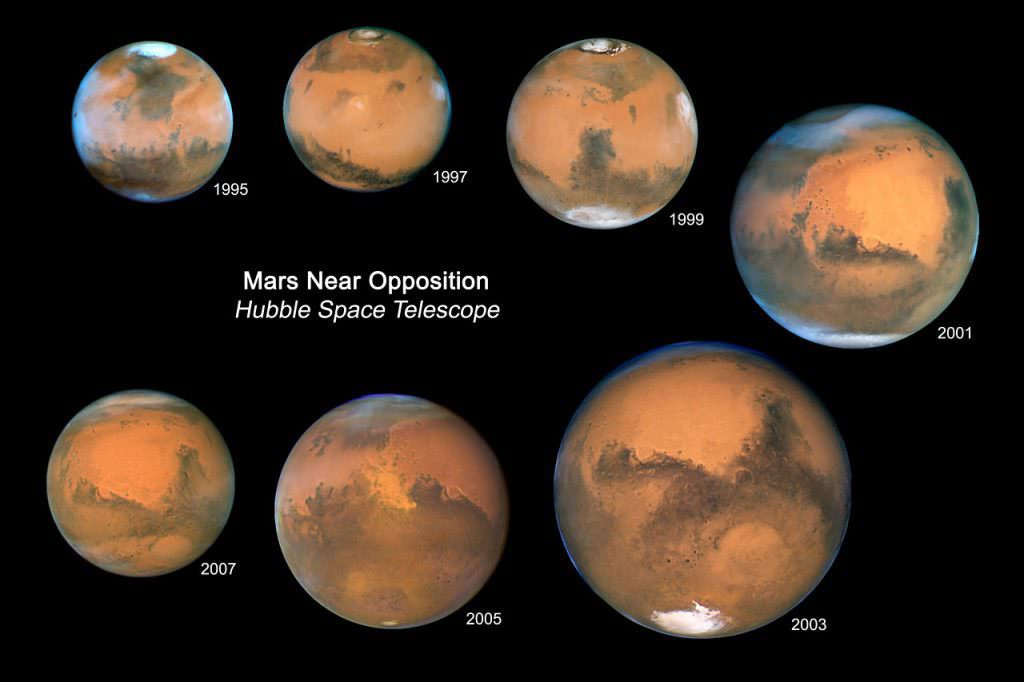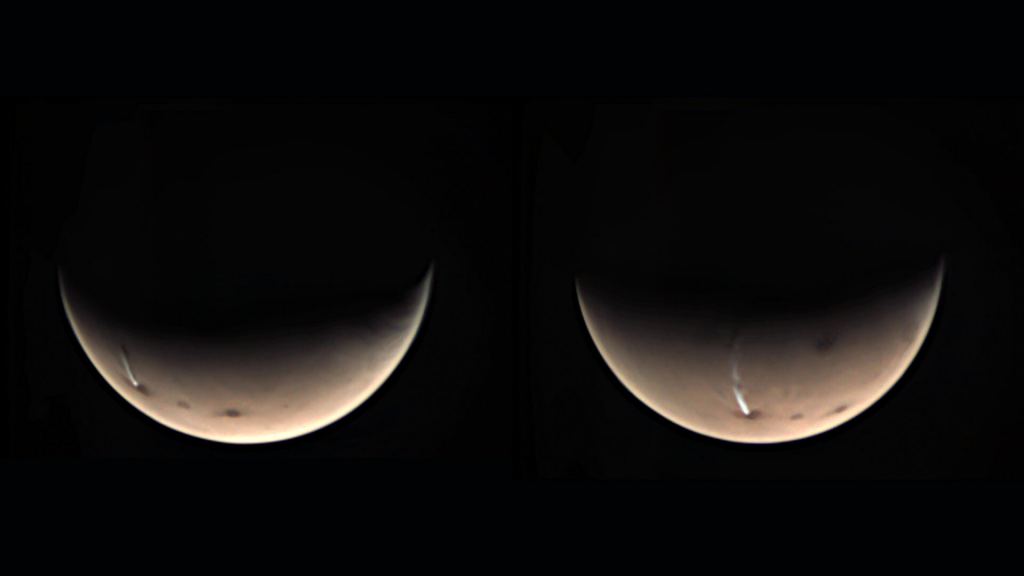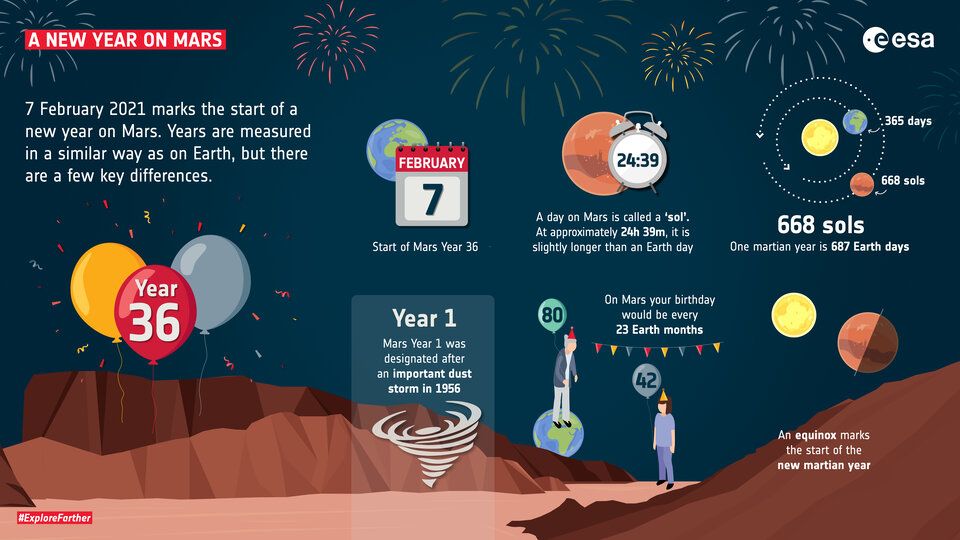Happy New Year – from Mars. It’s always mind expanding to think about the passage of time from other perspectives than the ones we are most familiar with. So let’s celebrate that our slightly colder red cousin completed another spin around the sun. The 36th Martian year began on February 7th, with a noticeable lack of fireworks or people singing Auld Lang Syne.
Despite the lack of festivities on the planet’s surface (maybe Curiosity could play Auld Lang Syne to itself?), the planet’s friends at ESA put together a bulleted list of some fun facts about the Martian year. Here are some highlights.

Credit: NASA/ESA
Year 36 might seem a little young, based on the fact that the planet is a few billion years old. That is because humans, with our anthropomorphic inclinations, decided arbitrarily to start counting Martian years in the human year 1955. Each year takes about 687 Earth days, leading us to the 36th Martian year beginning this month.
An important question is at what point in Mars’ spin around the sun does its year actually start? Astronomers have decided that the northern equinox marks the start of a new Martian year. This point is the beginning of spring in the northern hemisphere and autumn in the southern. That at least makes more sense than the arbitrary date slightly after the beginning of winter that our species has picked for at least most of Earth’s western hemisphere to begin a new year.
The choice of that date might be partly due to another fun fact about Mars’ year – it’s seasons are not all the same length. Mars has a highly elliptical orbit compared to Earth, meaning that its northern hemisphere’s spring (194 days) is much longer than its autumn (142 days). This path has predictably large impacts on the weather of the red planet. Increases in luminosity when the sun is closer (during the southern hemisphere’s summer and spring) cause large dust storms that blanket the planet almost annually, such as in Martian Year 1 with the aptly named “great dust storm of 1956”.
Those dust storms are not the only annual weather events though – another interesting one is the Arsia Mons Elongated Cloud, an 1800 km cloud of ice crystals which pops up for at least 80 Martian days (“sols”) a year and then disappears. Like many other features of Mars, it goes to show how the planet is dynamic and changing, despite appearing to be just a ball of rock with barely any atmosphere.

Credit: ESA/GCP/UPV/EHU Bilbao
As we learn more about our sometimes nearest neighbor, we will undoubtedly find more annual phenomena that take place there. But even now we can appreciate that time passes differently depending on how you look at it. If nothing else, you can tell your coworkers that you’re only 53% of your Earth age on Mars at least.
Learn more :
ESA: Happy New Year on Mars
UT: How Long is a Year on Mars?
UT: Mars Rotation
ScienceAlert: Happy New Year, Mars. Here’s Why It’s Such a Crucial Week

